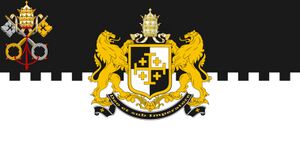Corruption in Creeperopolis: Difference between revisions
Jump to navigation
Jump to search
(Created page with "{{Infobox |above = Political Corruption |image1 = 300px|border |headerstyle = background:#CCCCDD |header1 = Concepts |label2 = |data2 = {{...") |
No edit summary |
||
| Line 1: | Line 1: | ||
{{Infobox | {{Infobox | ||
|above = Political Corruption | |above = Political Corruption | ||
|image1 = [[File:HTE Creeperopolis | |image1 = [[File:HTE Creeperopolis Flag.jpg|300px|border]] | ||
|headerstyle = background:#CCCCDD | |headerstyle = background:#CCCCDD | ||
|header1 = Concepts | |header1 = Concepts | ||
Revision as of 18:31, 19 December 2019
Corruption in Creeperopolis has permeated several segments of society – political, economic, and social – and has greatly affected the country's legitimacy, transparency, accountability, and effectiveness[citation needed]. Many of these dimensions have evolved as a product of Creeperopolis' legacy of elite, oligarchic, and royal consolidation of power and authoritarian rule. According to multiple international sources, since the 2003 Creeperian Coup D'état and rise of Alexander II as Emperor of Creeperopolis, corruption has increased and is running rampant in Creeperopolis.[1][2] These accusations of rampant corruption were ignored by the Grandmaster of Quebecshire André Bellerose[3] and denied by Emperor Alexander II[citation needed].

